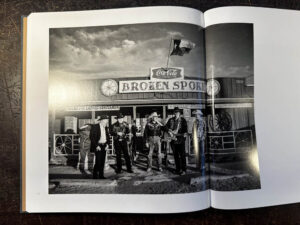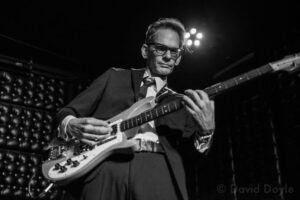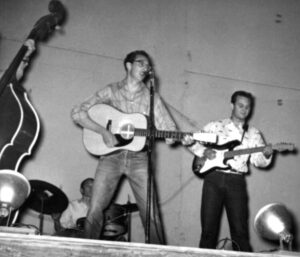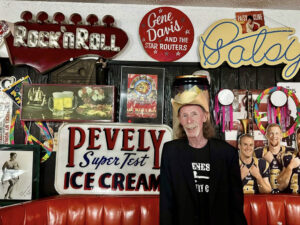From the upcoming Mosrite book that I’m working on: Here’s the “real” story behind the surfboard-shaped guitars and basses that are always referred to as the Strawberry Alarm Clock guitars.
Full credit here goes to Steve Soest, who did the research and talked to the important players in this story back in the late 1980s and early 1990s. Steve wrote an article for a Japanese guitar magazine, published in Japanese, reprinted here in English for the first time. To set the record straight:
1. These guitars were NOT made by Semie Moseley. They were envisioned by John Gregory, a Binks paint salesman who worked with Mosrite as a client, and his friend Al Hartel, who actually built the guitars. John pitched the idea to Mosrite and they sent him home with a bunch of necks, parts, and basswood blanks, so the parts on them are genuine Mosrite, but they were made by Al Hartel in Los Angeles.
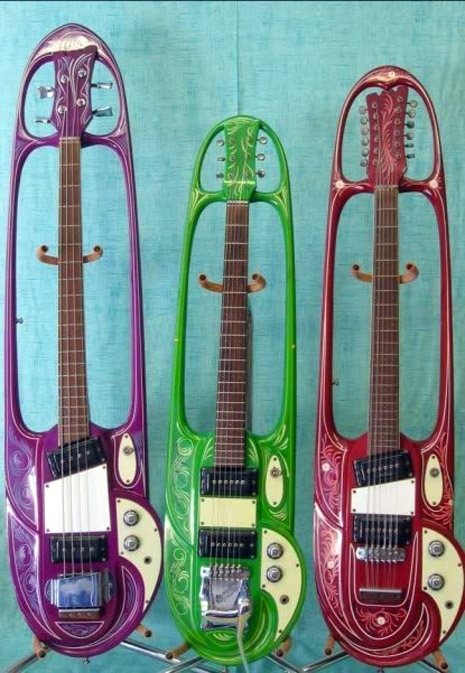
2. These guitars may have been made for the Strawberry Alarm Clock, but the band never used them, even though they were Mosrite endorsers at the time. There are no photos of the band with the instruments. Kudos to Steve Soest for writing a letter to Ed King of the Strawberry Alarm Clock and clarifying this.
3. The guitars were pinstriped by a local auto repair shop in the popular Von Dutch style that was prevalent in Southern California in the 1950s and 1960s. They were NOT pinstriped by Von Dutch himself, as has been printed in many books (I believe it was Scott Chinery, the owner of the Strawberry Alarm Clock guitars at one time, who perpetuated this myth, perhaps not understanding the difference between the work being done by Von Dutch himself or simply being done in his style, which was pervasive in the era that these guitars were made in).

Scott Chinery was a wealthy East Coast businessman who accumulated a huge collection of guitars (and cars, and other things) before passing away at the age of forty in 2000. Chinery owned the trio of “Strawberry Alarm Clock” guitars and got them into several books, where most people saw these for the first time. Unfortunately, there was much incorrect information put into the many books that featured the Chinery collection.
After Chinery’s death, many of his guitars wound up at a store in San Rafael, California, called E Guitars. I saw the trio of Strawberry Alarm Clock guitars there in a glass case, and the owner proudly told me he had turned down offers of $250,000 for the three instruments. Eventually, E Guitars began selling off major pieces on eBay with no reserve to quickly raise funds for the owner’s pet project (saving the Record Plant recording studio in Sausalito, a Marin County Institution). The three Strawberry Alarm Clock guitars sold on eBay with no reserve for $52,000.

If anybody knows the current whereabouts of the Strawberry Alarm Clock guitars, I’d love to be able to photograph them for the Mosrite book. And if anybody out there knows where the other surfboard guitars are located (there were eight total, supposedly), I’d love to know so I could photograph them, too.
Thanks again to Steve Soest for providing all this information.


